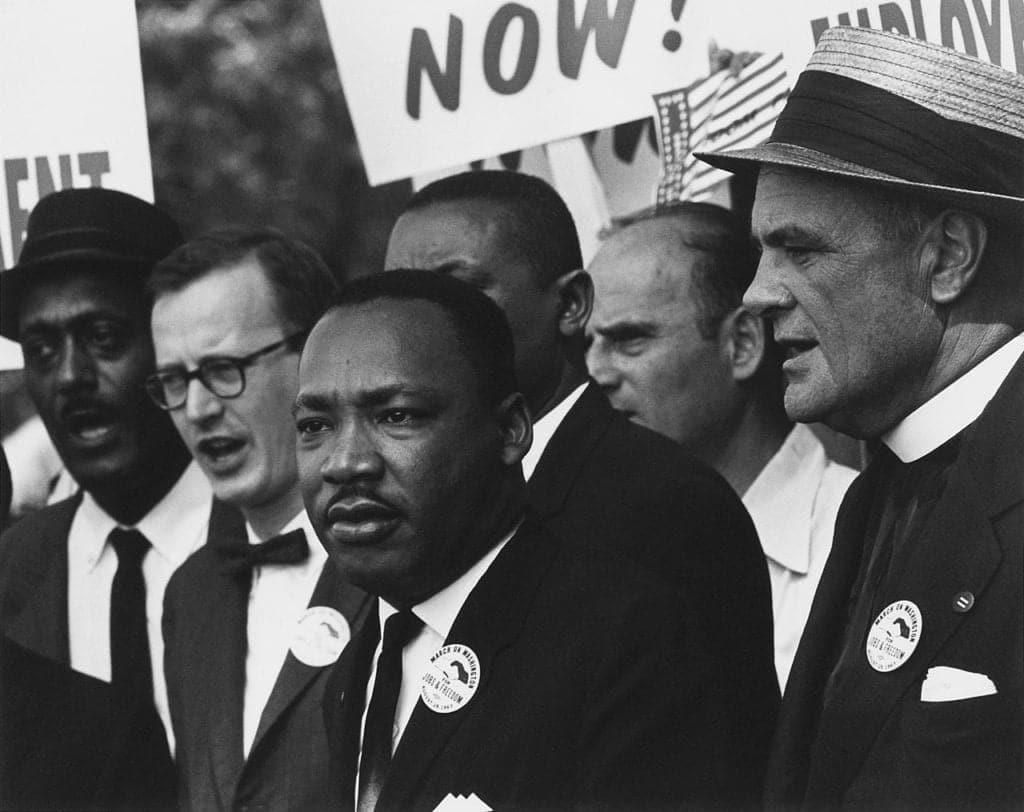It’s now been 60 years since the March on Washington for Jobs and Freedom — and the Reverend Martin Luther King, Jr.’s “I Have a Dream” speech.
At the rally, Dr. King famously proclaimed that all people, Black as well as white, have a “promissory note” from their government guaranteeing “the inalienable rights of life, liberty, and the pursuit of happiness.” He lamented that “America has defaulted on this promissory note” to Black citizens.
Six decades later, despite incremental progress on some fronts, the check has still come back marked “insufficient funds.” But with enough political will, we can clear it quickly. That’s the conclusion of our new report, Still a Dream: Over 500 Years to Black Economic Equality.
There are important signs of progress to mark. The unthinkably high rate of Black poverty has diminished since King’s time, falling from 51 percent in 1963 to 20 percent by 2021. But with one in five Black Americans still living in poverty — and one in 12 whites — it’s hardly a moment to pop the champagne bottle.
Other positive indicators include a sharp increase in Black high school attainment over the last 60 years and a significant decline in Black unemployment. For many important economic indicators, however, the pace of progress has been so incremental that it would still take centuries for Black Americans to reach parity with whites.
For example, the Black-white income gap has barely narrowed at all. In 1967, African Americans earned 58 cents for every dollar earned by whites. By 2021, that had risen to just 62 cents on the dollar. At this rate of progress, it would take Black households 513 years to reach income parity with their white counterparts.
Progress in narrowing the racial wealth divide has been even slower. In 1962, Blacks had 12 cents of wealth for every dollar of white wealth. By 2019, the last year of comprehensive data, Blacks had just 18 cents for every dollar of white wealth. At this pace, it would take 780 years for Black wealth to equal white wealth.
There has been essentially no progress in narrowing the gap between white and Black rates of homeownership, another key indicator of wealth and well-being. Sixty years later, there remains roughly a 30 percentage point gap, with 44 percent of Black households owning a home compared with 74 percent of whites.
In part, our country’s failure to bridge the racial economic divide reflects the growing inequality in our society overall.
During the last 40 years, America has experienced extreme levels of income and wealth inequality, with most gains flowing into the hands of the wealthiest — and mostly white — 1 percent. This has contributed to the stalling of progress toward racial equity, along with government withdrawal from investments such as affordable housing.
What could put us back on track? Without a doubt, the persistent Black-white divide requires racially targeted commitments to individual asset-building and other forms of reparations.
But other programs — including full employment, a government jobs program, universal health care, and a massive commitment to homeownership — would reduce racial inequality and lift up all those suffering from 40 years of stagnant wages, regardless of their race.
Many of these investments could be paid for by wealth taxes aimed at reducing dynastic concentrations of wealth and power, among other efforts to get the very wealthy to pay their fair share in our unequal country.
At the Lincoln Memorial 60 years ago, King exclaimed: “We have come to this hallowed spot to remind America of the fierce urgency of now. This is no time to engage in the luxury of cooling off or to take the tranquilizing drug of gradualism.”
Taking over half a millennium to close our racial economic divide is gradualism in the extreme.
To act today, based on the fierce urgency of now, we must make the investments to eliminate racial disparities within one generation.
Sixty years after bouncing the check, it is time to fulfill America’s promise with a bold response.
This op-ed was distributed by OtherWords.org.






